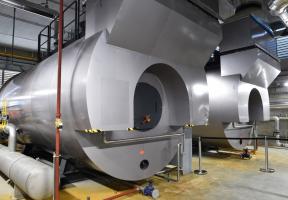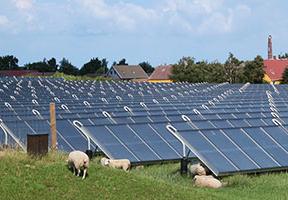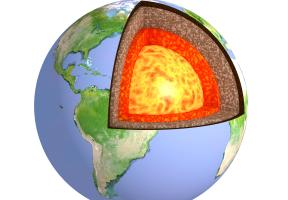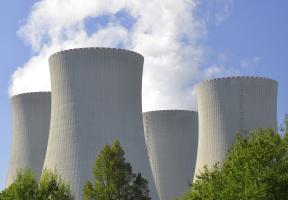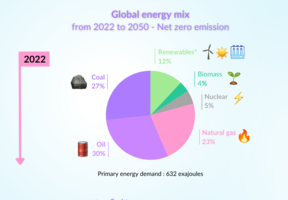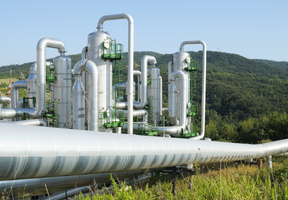District Heating Systems: Uneven Use Around the World
10 min read
The use of district heating systems varies significantly worldwide. Although the world’s first district heating systems were introduced in the United States in 1877, the country only uses them to meet 4% of its needs (see box below). Russia is the world leader (55%), but its systems are small and dated. China is expanding its systems at a fast pace. The situation in Europe presents sharp contrasts.
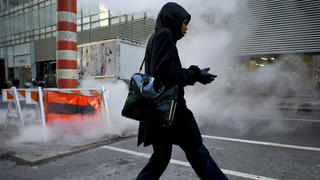
© AFP / D.EMMERT - The city of New York has one of the oldest and most extensive district heating systems.
Contrasting Use of District Heating Worldwide
District heating systems have been providing warmth to homes for decades around the world, although their development has been very uneven.(1)
Russia is the global leader, with more than 17,000 district heating systems serving 44 million customers. The country alone accounts for 55% of installed district heating worldwide. But its systems are small, old and often poorly maintained, despite initiatives to modernize technical aspects and management. They are 98%-supplied by fossil fuels, of which 75% natural gas.
In China, district heating was not introduced until the 1980s, but its systems are modern and developing rapidly, in step with the country’s growth. In November 2020, China achieved a world first by recovering heat from the Haiyang nuclear plant, located between Beijing and Shanghai. In time, low-carbon nuclear heat is expected to supply the entire city of Haiyang, which has a population of 660,000 people.(2)
Japan, where neighborhood “energy communities” have been growing at a fast pace, is developing district heating and cooling systems, the latter of which have become the most widespread.
In Europe, some 6,000 district heating and cooling systems provide heating to 100 million people across 32 countries, with marked differences from country to country. A 50% penetration rate has been achieved in Scandinavian countries, with the rate in Denmark’s capital Copenhagen reaching 98%. The rate is 95% in Iceland, thanks to the country’s use of energy. Germany (13%) is well ahead of France (5%), whose rate is slightly higher than that of the United Kingdom and the Netherlands. In Europe, 240 networks are geothermal-powered, with a ramp-up in the use of heat pumps.
In France, a district heating system observatory has been set up,(3) identifying over 781 district heating systems, for the most part located in major urban centers. An estimated 3 million people are connected to district systems in the residential sector, and a further 3 million in the tertiary sector, which includes education, public authorities and healthcare facilities.
A Few Examples of Systems
Dunkirk and Chevilly-Larue, France:
Operational since 1985, the Deux Synthes district heating system in Dunkirk is France’s biggest industrial recovery network, thanks to the ArcelorMittal steel plant.(4) Two recovery units capture heat from the blast furnaces, which provide 55% to 60% of the network’s total heat. The remainder comes from (combined heat and power) plants. The heat is distributed to 180 buildings, 6,000 public housing units and private homes, a hospital complex, schools and other public buildings via 50 kilometers of pipes. Once installed, the system is carbon neutral and 90% of the industrial dust is recovered, improving air quality.
The district heating system for the Ile-de-France municipalities of Chevilly-Larue, L’Haÿ-les-Roses and Villejuif uses a different source of energy, namely a geothermal located more than 1,500 meters underground whose temperature varies between 57°C and 85°C. Created in 1985 and renovated in 2016, the system serves some 45,000 residents via 29 smaller networks, making it Europe’s largest geothermal district heating system(5).
Gothenburg, Sweden:
Sixty percent of the residents of Gothenburg, Sweden’s second-largest city, are supplied with heat and hot water by a district heating system5. The heat is provided at 80% from the recovery process: 27% from waste , 30% from refineries, 19% from power plants, and 5% from wastewater. Renewable sources account for 15% of direct generation, with fossil fuels now representing just 5%. The most remarkable feature of the system is its steady expansion, thanks to the continuous backing of the authorities. The first building blocks were laid in 1953, with one, then two, fuel oil-fired power plants. In the 1970s, as oil prices soared, alternative solutions were pursued, with heat recovered from wastewater, waste incineration and two refineries. In 1990, a river-assisted cooling system was added. Wood-fired power plants were built in 2000.
Fredericia, Denmark:
In 1983, Fredericia, a considerable port city in Denmark, began installing a district heating system fueled by heat recovered from a fertilizer plant, a refinery and incineration plants6. Four other neighboring communities introduced similar systems, which have been tied into the original one, creating a vast integrated network that supplies 55,000 homes via 75 kilometers of pipes. Integration is the system’s defining characteristic: it is managed centrally from state-of-the-art control rooms, is highly efficient and heat losses are just 3%. The annual savings is estimated at 130 million liters of fossil fuels.
New York’s Steam System
Clouds of steam billowing from underground to wreathe skyscrapers form an iconic image of the New York cityscape. This major North American city has the world’s biggest — and one of its oldest — district heating systems, created in 1882. Its 170 kilometers of pipes run under the streets of Manhattan to supply 1,800 buildings, from the Empire State Building to the United Nations. It has twice the capacity of the Paris system, which is not small. The steam that escapes from below ground is not leaking, but is created when groundwater comes in contact with hot pipes.
Sources:
- See the website of the French Center for Research and Expertise on Risks, the Environment, Mobility and Development (CEREMA) – District heating systems and regions (in French)
- See the website of the French Nuclear Energy Society (SFEN) (in French)
- Observatory website (in French)
- France 3 video (in French)
- CEREMA feature report (in French only)



